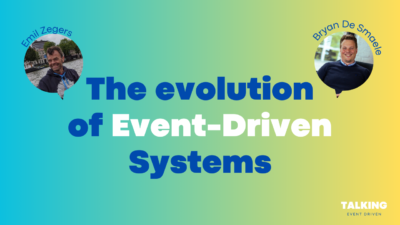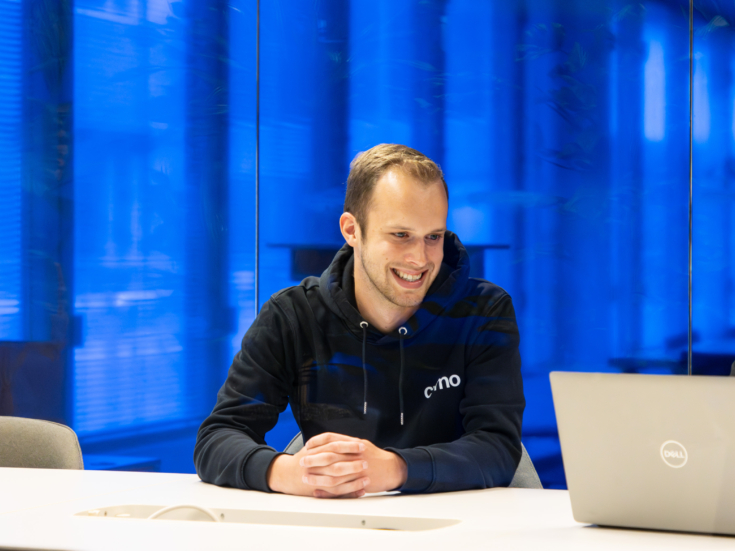My Journey to Becoming a Confluent Certified Developer for Apache Kafka
Apache Kafka and its cloud-focused version Confluent are basically the go-to tools for big data, real-time data processing, and event-driven microservices. However, if you’re a junior developer like me, chances are that you haven’t heard of them yet. A great way to delve deeper into these Event-Driven Architecture (EDA) technologies and broaden your skill set is to get certified.
In this blog, I’ll tell you all about how my internship at Cymo led to me becoming a Confluent Certified Developer for Apache Kafka (CCDAK). I’ll share some interesting learning resources and tips and tricks for the exam, so you can be well-prepared if you decide to check it out. Let’s dive in!
Why I Chose the CCDAK Certificate
It all began when I started to work with Kafka during my internship at Cymo. I'd never even heard of it during my time at school, so it definitely was an interesting technology! My first week at Cymo was all about diving headfirst into Kafka and figuring out how the puzzle pieces fit together.
When I had a handle on the basics, I rolled up my sleeves and started coding in an event-driven way for the first time in my life. Once I finished my internship and decided to start working at Cymo full time, I needed to expand and verify my knowledge about Kafka, so I decided to become a Confluent Certified Developer.
The Learning Journey
If you want to become a Confluent Certified Developer for Apache Kafka, you’ll have to get familiar with quite a few concepts. Here’s the resources that I studied in order, which took me about a week and a half:
Confluent Certified Bootcamp: Developer
I kicked things off with Confluent's bootcamp, which they recommend as a general introduction. It offers a solid understanding of Kafka, but I decided to breeze through the "get specific" part since I felt that it was similar to the "getting started" section. This was a great high-level overview, and I definitely recommend starting here.
Apache Kafka Fundamentals and Accreditation
I wanted to deepen my high-level knowledge, so I enrolled in the Apache Kafka Fundamentals course. This gave me a better idea of Kafka's inner workings. To test my knowledge, I also did the Confluent Fundamentals Accreditation test, which will help you figure out if you’re lacking some of the basic knowledge.
Exploring ksqlDB and Kafka Connect
Once I had figured out the fundamentals and tested myself, I figured it was a good idea to learn more about ksqlDB and Kafka Connect. Learning more about Kafka’s database and integration technologies was great, especially since I hadn't used them during my internship. Be sure to check this one out!
Another crucial piece of the Kafka puzzle is Kafka Streams. I'd dabbled in Streams during my internship, but that was a few months back. So, I opted to follow this short course on Streams to help me prepare for the CCDAK exam. If you follow this course, make sure to practise using the examples: it will help you out later.
After studying all the resources mentioned earlier, I felt pretty comfortable with my newfound knowledge. However, I wanted to know more about the nitty-gritty details. After some research, I saw that some people recommended "Kafka: The Definitive Guide," specifically chapters 1 to 6. If you’ve been following along, you will already be familiar with the content of the first 4 chapters at this point. Chapters 5 and 6 should be enough to fill in the gaps in your knowledge.
Developer Certification Sample Questions
Finally, to prepare for the exam, I practised with sample questions provided by Confluent. These questions closely mirrored what I would encounter on the actual exam. Don’t spend your time looking for exam dumps, because there simply aren’t any out there.
Taking the CCDAK Exam
After all this studying, the moment of truth is the Confluent Certified Developer for Apache Kafka (CCDAK) exam. It consists of 60 multiple-choice questions, which you will have to answer in 90 minutes using a program called ProProctor. There are two types of questions: theoretical questions, relating to definitions, and practical scenarios.
If you ask me, the 90 minutes they give you is more than enough to answer all 60 questions, so there is no need to rush yourself through them. However, you only get one attempt per exam fee, so make sure to make the most out of it!
Finally, I had some trouble getting my room suitable for the exam. Confluent has some specific requirements, so here are some tips and tricks to make sure you can take the exam right away.
Seclude yourself: Your exam environment should be free from any potential distractions. Tape off windows or close them with curtains, choose a room on a higher floor, and maintain privacy.
Stay smartphone-free: Leave your smartphone outside the exam room, which will also help prevent any temptation or distractions.
Clear your workspace: Your desk and surroundings need to be free from any written materials to maintain focus.
TVs unplugged: If a TV is present in your room, make sure it's visibly unplugged, so the examiners don’t think you’re using it as an external display.
After the Exam
After submitting your CCDAK exam, you'll be prompted to complete a brief questionnaire. Within an hour, you'll receive an email with your exam results and further instructions. If you’ve passed, the email will show you how to join the Confluent Certified Developer for Apache Kafka community, where you can learn about Kafka from other CCDAK experts.
If you’ve followed this guide and put in the work, you should have no issues passing the exam. I hope you found this interesting, and I'll see you in the community!

Written byJoran Van Belle
Read more

PODCAST (S1 - E8): the evolution of event-driven systems
In this episode, Emil Zegers shares his insights with Bryan on how he thinks building a design-first strategy and mapping that to your runtime deployment is the way to go when it comes to Event-Driven Systems. Do you agree?

PODCAST (S1 - E7): the journey of becoming an Event-Driven Organisation
In this episode, Kris Feys shares his insights with Wout on how he thinks EDA is the future, but comes with a lot of change... Change that not everyone is ready for. Are you?

PODCAST (S1 - E6): the role of AI in Event-Driven Architecture
In this episode, Dunith Danushka shares his insights with Bryan on how he thinks EDA has the ideal foundation to build on with many technologies (and trends). It's a must-watch for anyone wanting to optimize their event-driven journey!
